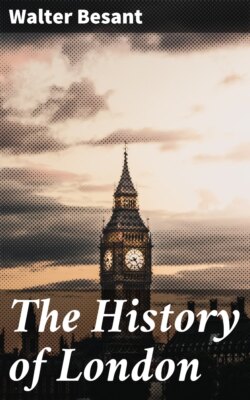Читать книгу The History of London - Walter Besant - Страница 13
На сайте Литреса книга снята с продажи.
10. THE ANGLO-SAXON CITIZEN.
ОглавлениеTable of Contents
The Londoner of Athelstan and Ethelred was an Anglo-Saxon of a type far in advance of his fierce ancestor who swept the narrow seas and harried the eastern coasts. He had learned many arts: he had become a Christian: he wanted many luxuries. But the solid things which he inherited from his rude forefathers he passed on to his children. And they remain an inheritance for us to this day. For instance, our form of monarchy, limited in power, comes straight down to us from Alfred and Athelstan. Our nobility is a survival and a development of the Saxon earls and thanes; our forms of justice, trial by jury, magistrates—all come from the Saxons; the divisions of our country are Saxon, our municipal institutions are Saxon, our parliaments and councils are Saxon in origin. We owe our language to the Anglo-Saxon, small additions from Latin, French, and other sources have been made, but the bulk of our language is Saxon. Three-fourths of us are Anglo-Saxon by descent. Whatever there is in the English character of persistence, obstinacy, patience, industry, sobriety, love of freedom, we are accustomed to attribute to our Anglo-Saxon descent. In religion, arts, learning, literature, culture, we owe little or nothing to the Anglo-Saxon. In all these things we are indebted to the South.
Let us see how the Anglo-Saxon Londoner lived.
He was a trader or a craftsman. As a trader he received from the country inland whatever it had to produce. Slaves, who were bred like cattle on the farms, formed a large part of the exports; hides, wool, iron, tin, the English merchant had these things, and nothing more, to offer the foreigner who brought in exchange wine, spices, silk, incense, vestments and pictures for the churches and monasteries, books, and other luxuries. The ships at first belonged to the foreign merchants: they traded not only at London, but also at Bristol, Canterbury, Dover, Arundel, and other towns. Before the Conquest, however, English-built ships and English-manned fleets had already entered upon the trade.
The trader, already wealthy, lived in great comfort. He was absolute master in his own house, but the household was directed or ruled by his wife. Everything was made in the house: the flour was ground, the bread was baked, the meat and fish were salted; the linen was woven, the garments were made by the wife, the daughters, and the women servants. The Anglo-Saxon ladies were remarkable for their skill in embroidery; they excelled all other women in this beautiful art.
The Anglo-Saxon house developed out of the common hall. Those who know the colleges of Oxford and Cambridge can trace the growth of the house in any of them. First there is the Common Hall. In this room, formerly, the whole family, with the serving men and women, lived and slept. There still exists at Higham Ferrars, in Northampton, such a hall, built as an almshouse. It is a long room: at the east end, raised a foot, is a little chapel; on the south side is a long open stove; the almsmen slept on the floor on reeds, each man wrapped in his blanket.
